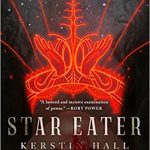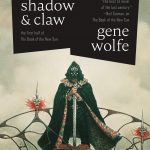Deconstructing the Hero’s Journey in “Sword and Citadel” – Book Review

Sword and Citadel, the second and final volume of Gene Wolfe’s dying earth series, The Book of the New Sun, continues Severian’s journey through a far future world. It covers The Sword of the Lictor and The Citadel of the Autarch. This reprint edition will be released by Macmillan on August 10.
I’ve received an ARC of Sword & Citadel from NetGalley in exchange for an honest review. All opinions are my own.
In her forward for the reprint of the first volume, Shadow & Claw, Ada Palmer mentions the idea of a cluttered future. In her forward for Sword & Citadel, she discusses what happens offstage during the hero’s journey. She references a scene from the Jacobian play Pericles, Prince of Tyre, in which King Antiochus dies offstage after being the driving force for the hero. This technique, intended for the audience’s reception, demonstrates the effects of what’s not being shown or said.
What we see doesn’t always complete our perceptions, but the audience still expresses relief at the antagonist’s death or weep at the loss of the hero’s loved one. Even if it’s a mention or a monologue, the offstage event manages to move the audience. Sword & Citadel mentions significant events and incidents, like character deaths and battle outcomes, through a few sentences (if not omitted) from our narrator, Severian.
Severian’s journey in Sword & Citadel doesn’t cover the beginnings and endings of important events. Unlike classics such as The Odyssey, Severian starts scenes and sequences in media res. Instead of recounting all of the hero’s encounters and triumphs, Severian focuses more on his philosophical reflections. His internal monologue seems to hold more importance than what’s happening around him.
We, the readers, learn more about the world, including unexpected twists, but the majority of the second volume focuses on Severian’s thoughts. And because he’s an unreliable narrator, the fragmented events might as well not share the entire tale.
Like in the first volume, Sword & Citadel features characters that come and go. These minor characters and short-term companions play a part in Severian’s journey, but they don’t significantly impact his narrative arc. Unlike key figures that serve the hero’s journey (i.e., the villain, the mentor), the characters Severian meets contribute to his philosophical reflections. Like him, the people he meets and interacts quietly pass by with modest impressions.
For instance, he temporarily stays at the home of a humble mother and her son. Among his reflection of them, he noted the comfortable state of their home, a stark contrast to the romanticized architecture (i.e., towers) of his home.
The reprint of Sword & Citadel is available from Macmillan.
Learn more about the late Gene Wolfe here.
Read my review of the first volume, Shadow & Claw, here.
Author: Bradda M.
Bradda M. currently lives in Virginia. He teaches ESOL (English to Speakers of Other Languages) at a public school and spends his free time reading and watching movies each night with his partner. For The Geekiary, he writes about webcomics and SFF media.
Help support independent journalism. Subscribe to our Patreon.
Copyright © The Geekiary
Do not copy our content in whole to other websites. If you are reading this anywhere besides TheGeekiary.com, it has been stolen.Read our






